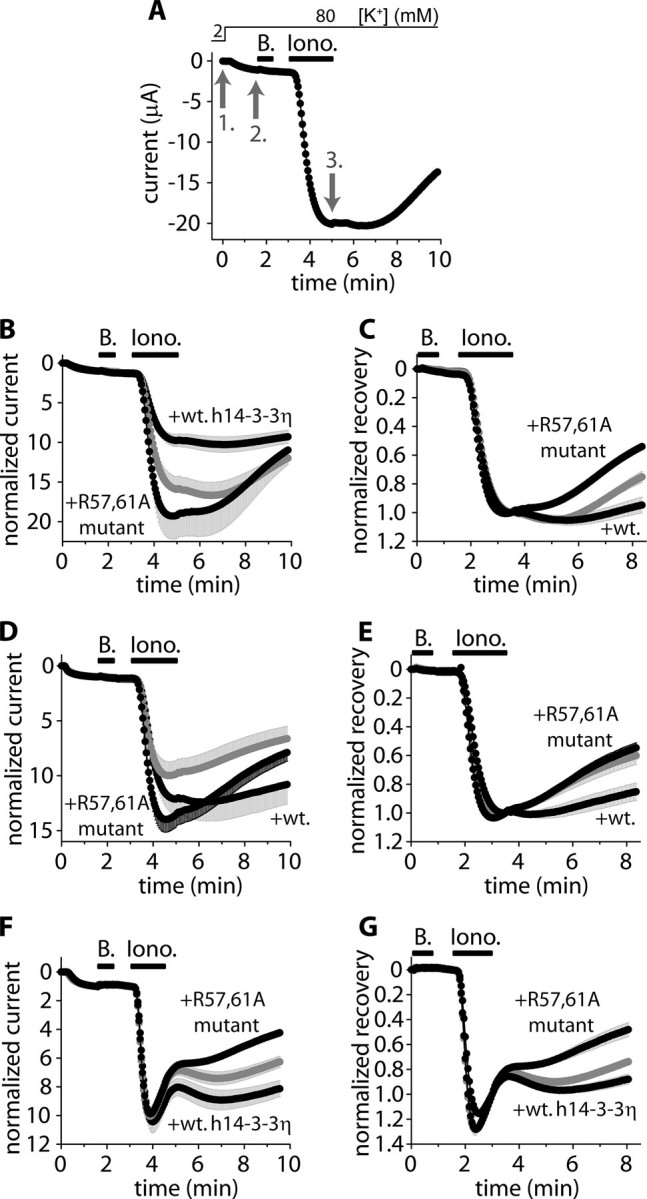FIGURE 1.

The coexpression of wild type 14-3-3η with TRESK inhibits, whereas the dominant negative 14-3-3η accelerates, the recovery of TRESK current from the calcium-dependent activation. A, currents of a representative Xenopus oocyte expressing mouse TRESK were measured at the ends of 300-ms voltage steps to –100 mV applied every 3 s from a holding potential of 0 mV. Extracellular [K+] was increased from 2 to 80 mm, and the oocyte was then challenged with benzocaine (B, 1 mm) and ionomycin (Iono., 0.5 μm) as indicated by the horizontal black bars (the initial resting state of TRESK was verified by the application of benzocaine, which inhibits the resting and calcineurin-activated channel by 10–15 and 50–60%, respectively (19). For normalized current, the current measured in 2 mm EC [K+](1. gray arrow) was normalized to 0, and the current in 80 mm EC [K+](2. gray arrow) to 1. For normalized recovery, the current at the 2. gray arrow was normalized to 0, and the current at the end of ionomycin stimulation (3. gray arrow) to 1. B and C, normalized currents and recoveries of three groups of oocytes expressing mouse TRESK (gray curve) coexpressing wild type human 14-3-3η or the dominant negative R57A,R61A 14-3-3η with TRESK, respectively (n = 3 × 5). D and E, the same experiment as in B and C was performed with another oocyte preparation (n = 3 × 6). F and G, the same experiment as in B and C was performed with oocytes expressing (or coexpressing) human TRESK (n = 3 × (5–7)) (ionomycin also caused a slow, calcium-independent inhibition of the human channel in addition to the calcineurin-dependent activation). The error bars represent S.E.
